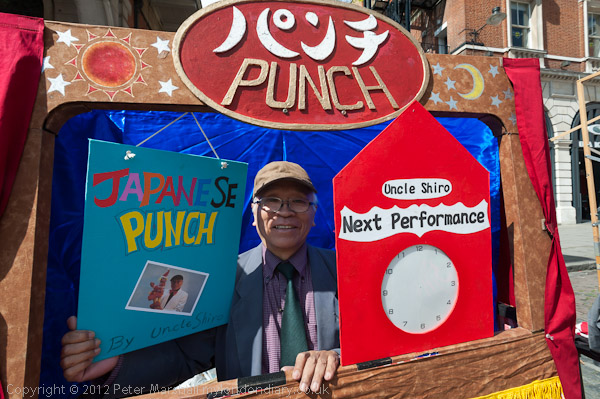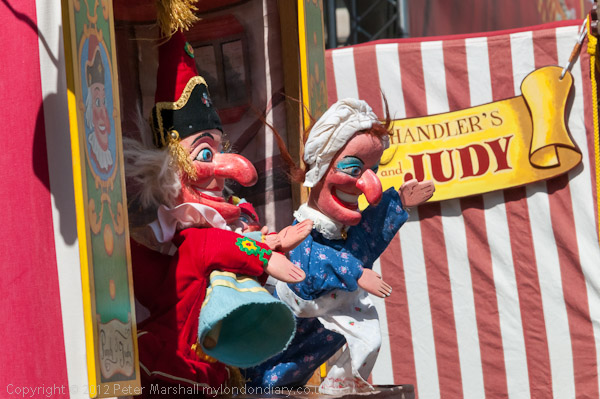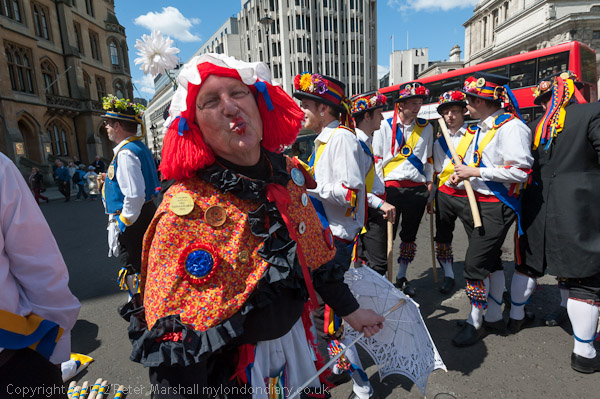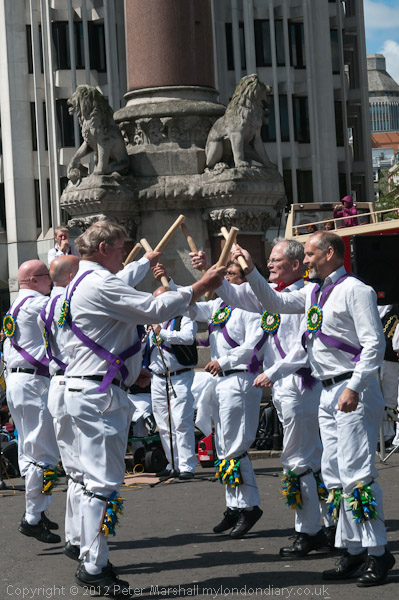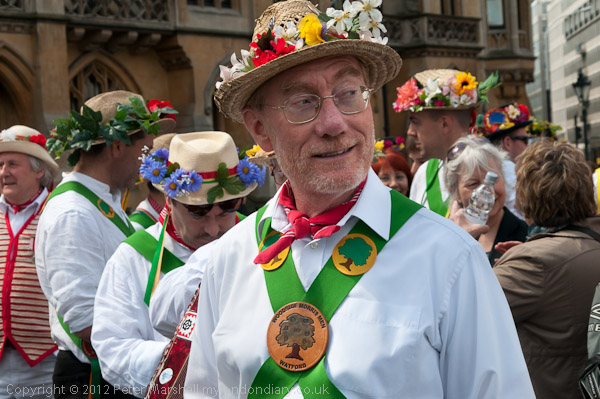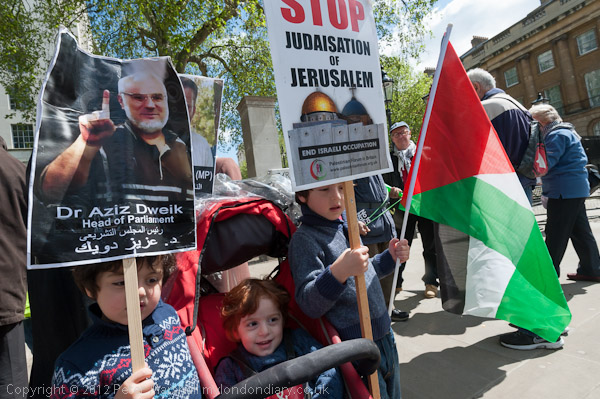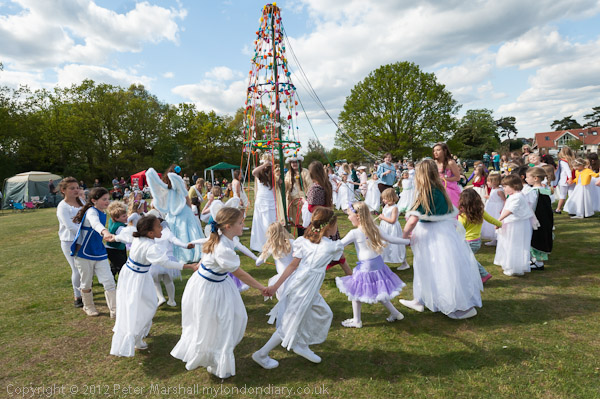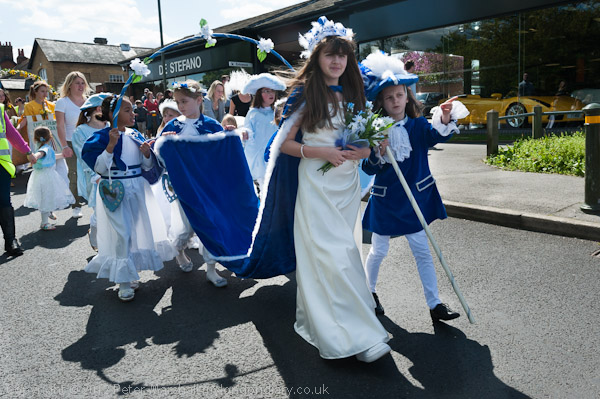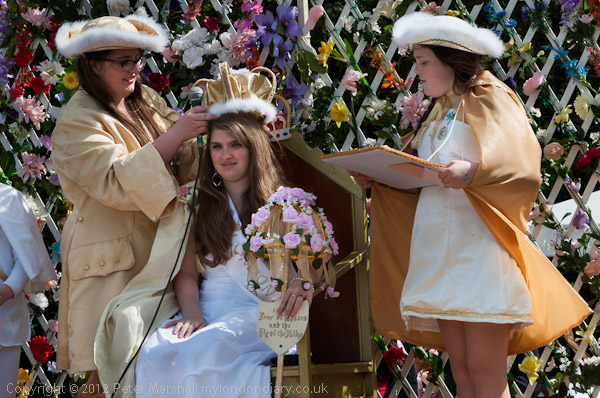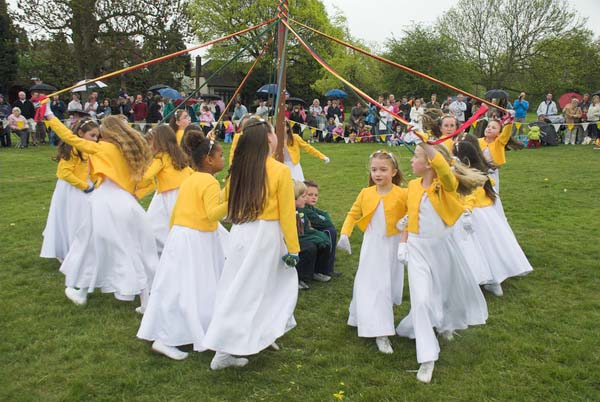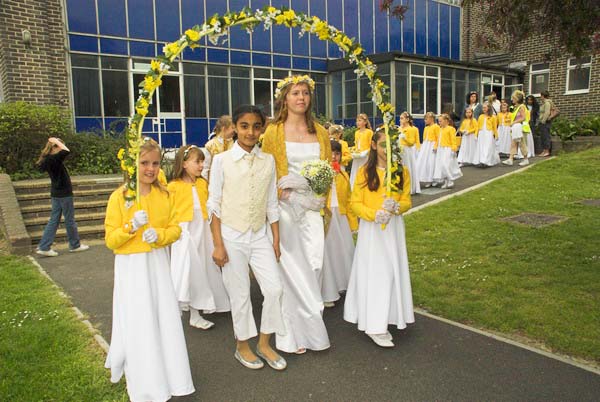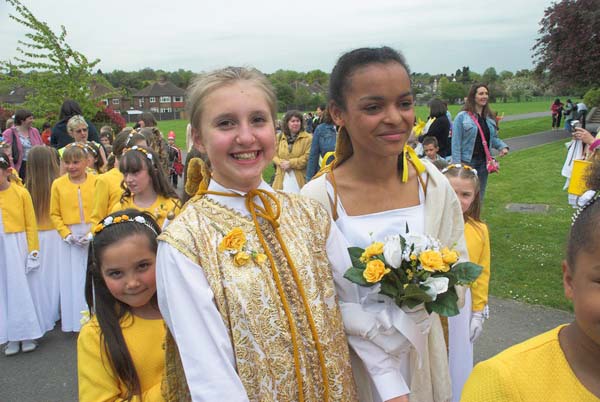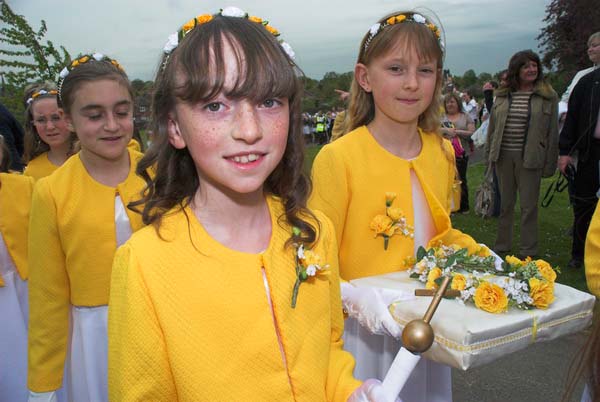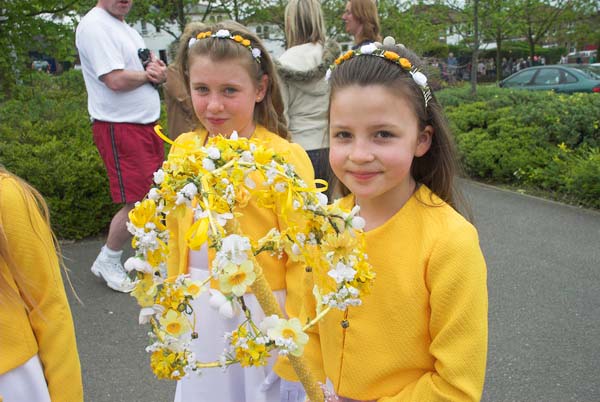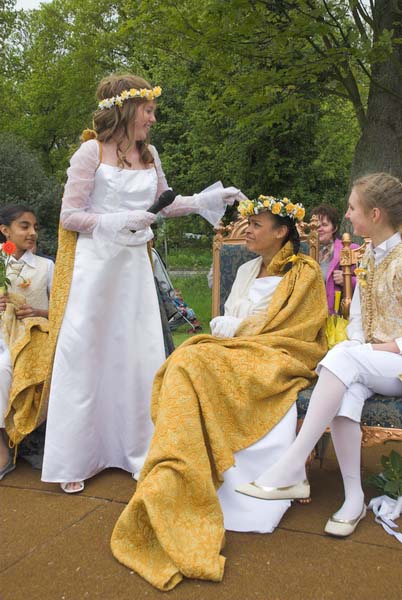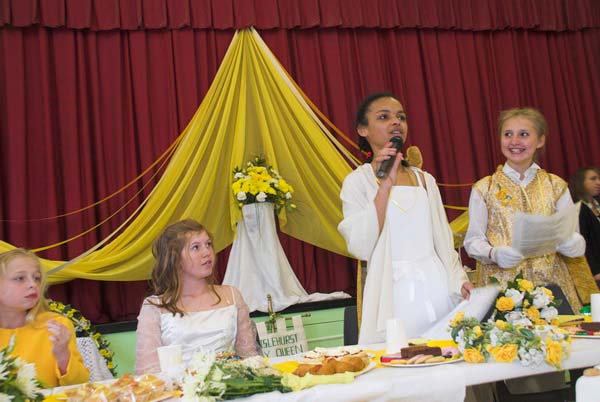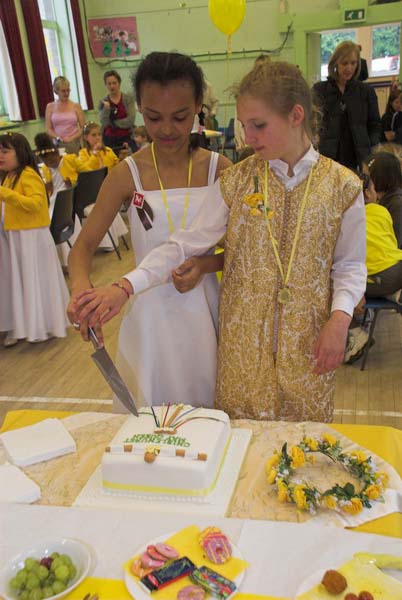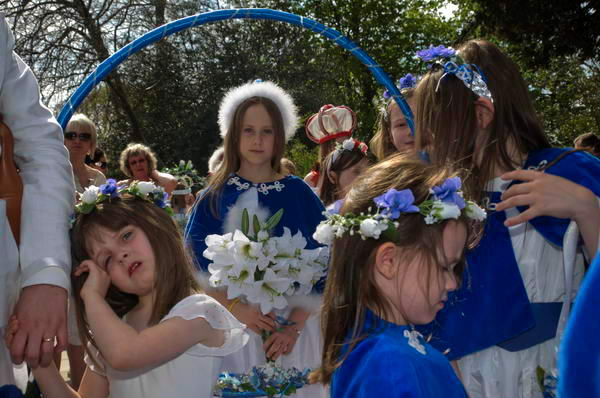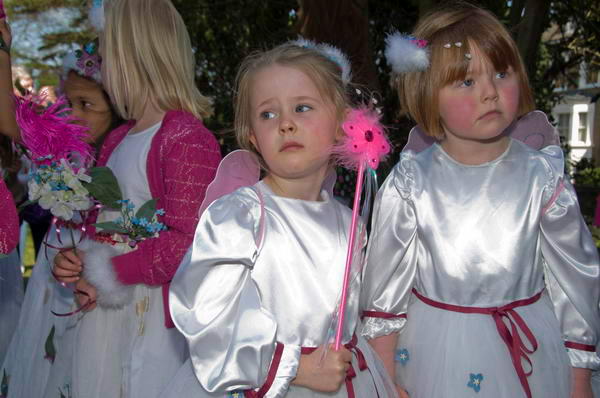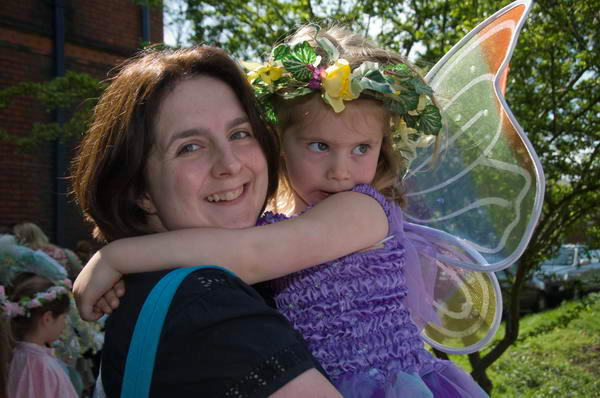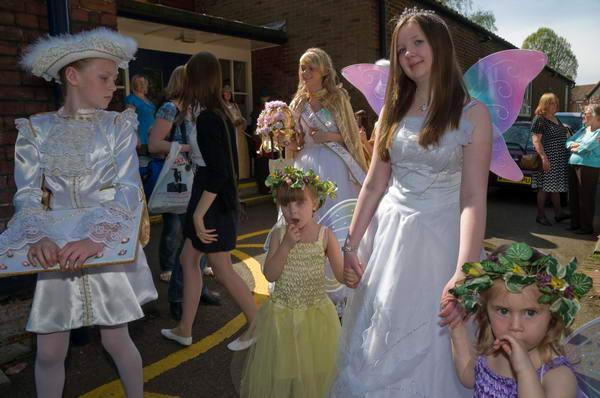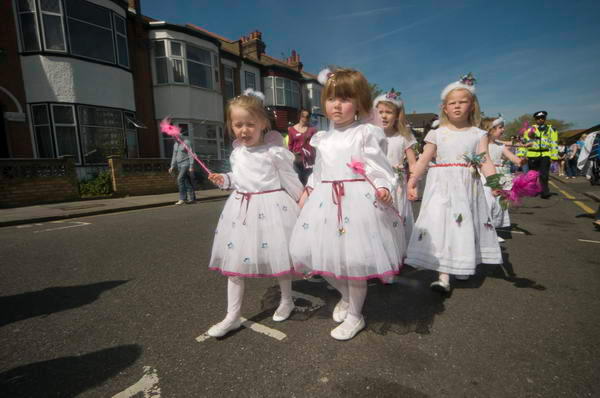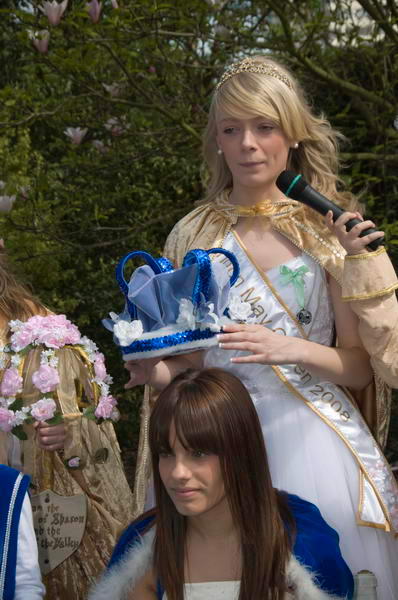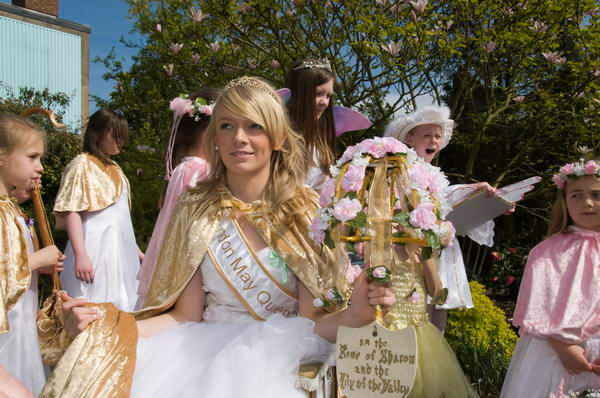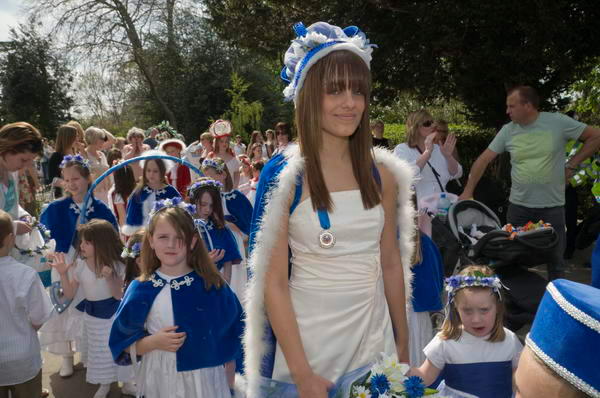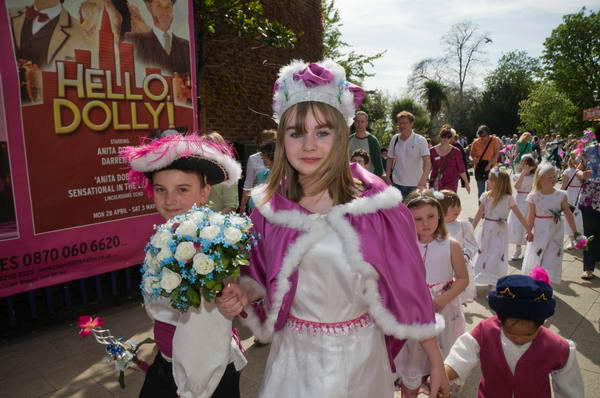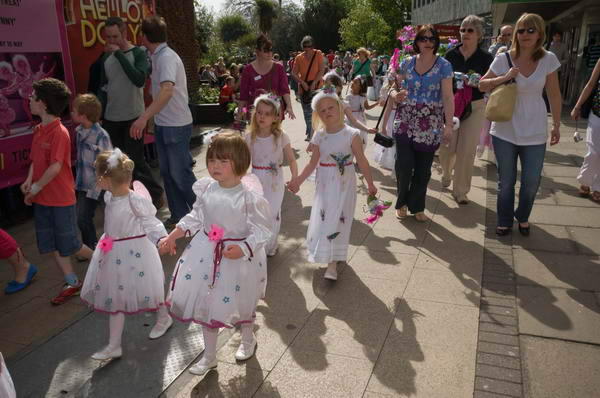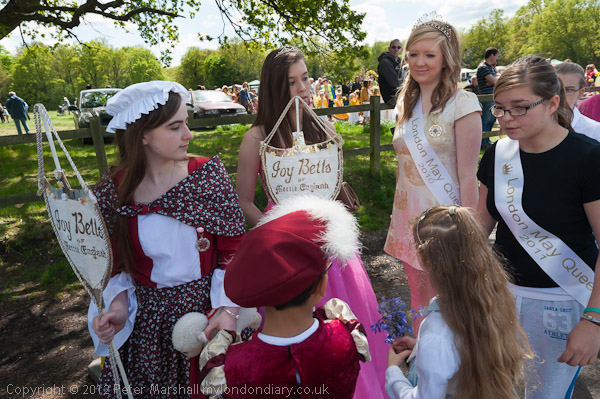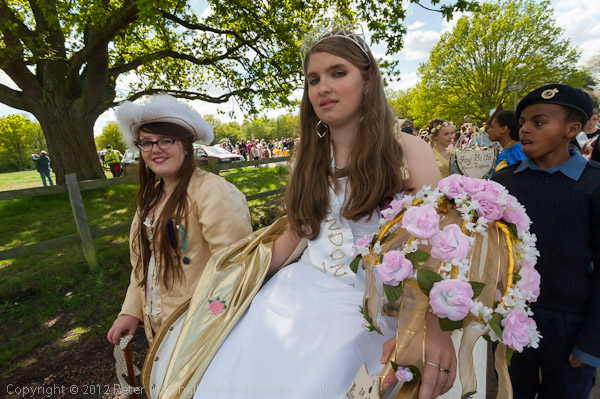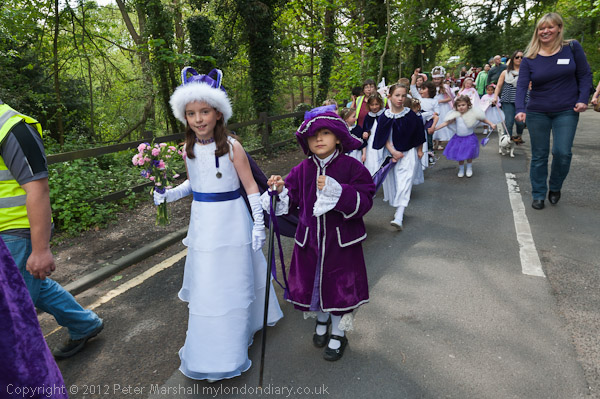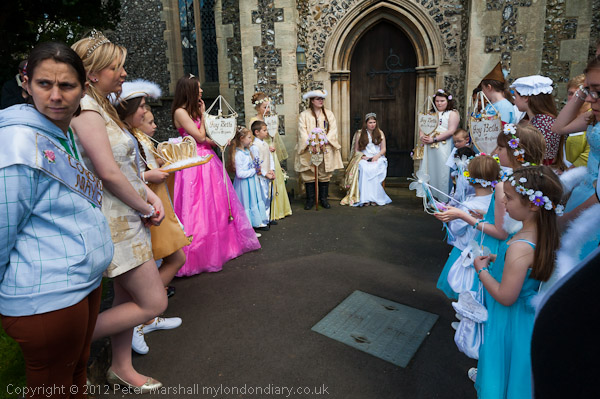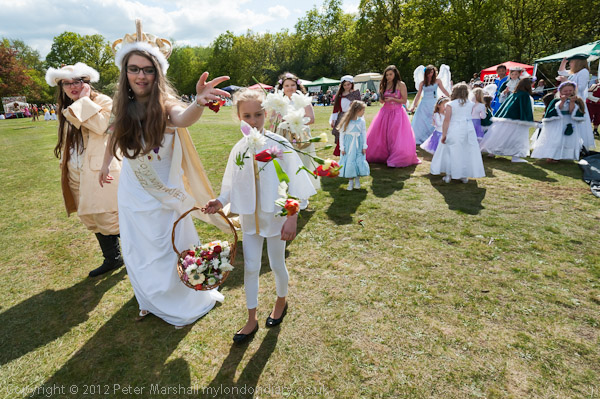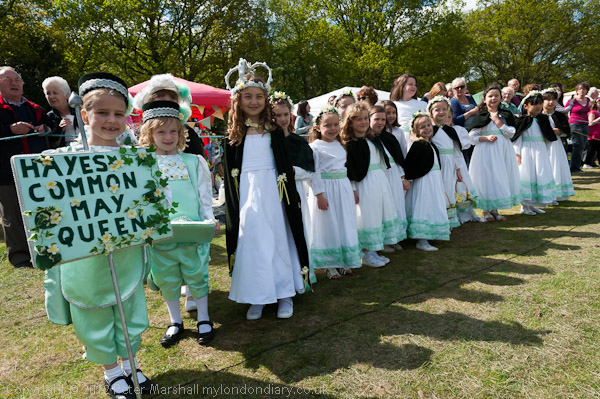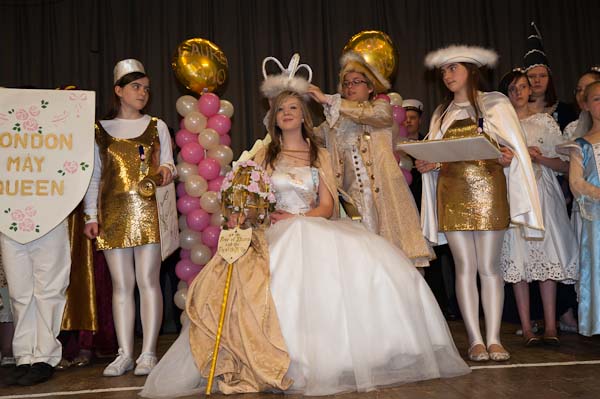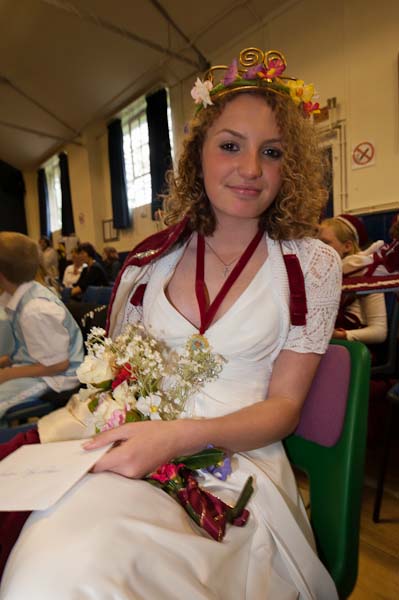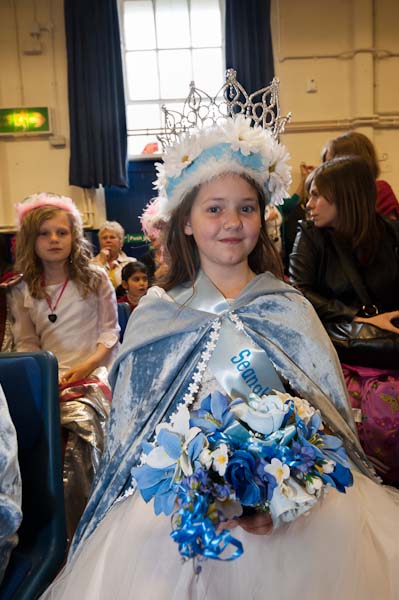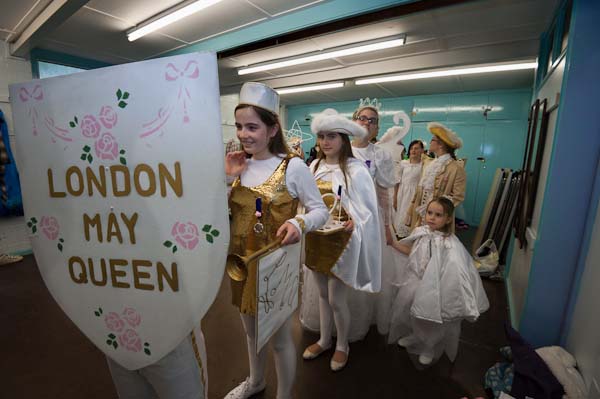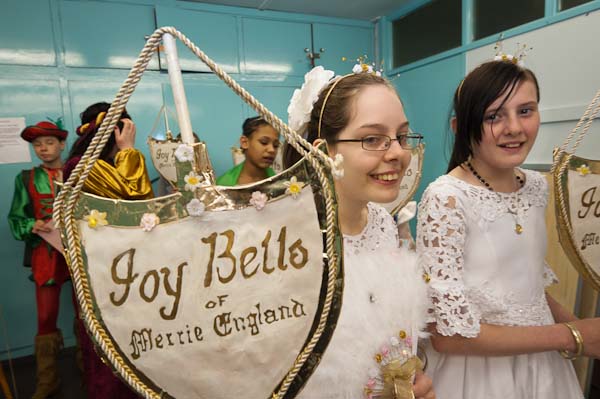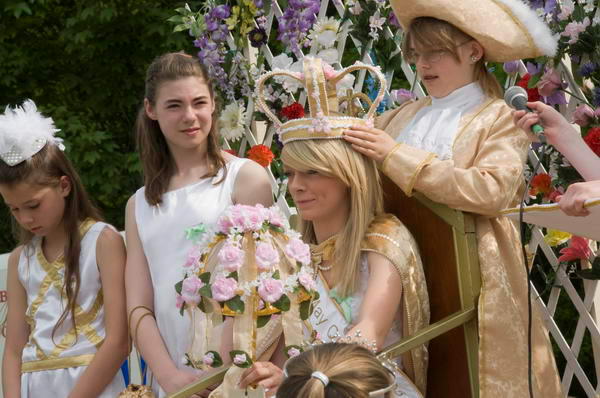Ray-Jones & London May Queen: The very first London May Queen event I photographed was on Saturday 14th May 2005. Previously I had thought that such events had died out years earlier. They had been recorded in the late 1960s and 1970s by photographers including the late Tony Ray-Jones whose work in his book ‘A Day Off‘ published posthumously in 1974 (and earlier publications in Creative Camera magazine and elsewhere) had a great influence on myself and other young photographers in the UK.

Ray-Jones had won a scholarship to the USA to study design at Yale in 1961 and there he had been greatly influenced by the work of Robert Frank in his book ‘The Americans’ published in France in 1958 and in the USA the following year as well as the work of a younger generation of American photographers Frank’s work had inspired. After Yale Ray-Jones worked for several years in the USA and attended workshops with the legendary art directory Alexey Brodovitch.

He returned to the UK and as well as taking photographs promoted his US-acquired views on photography with an evangelistic fervour. In this he found an ally in the Bronx-born photographer John Benton-Harris, another ‘Brodovitch Boy’ who had settled in London – who I later became friends and worked with. After Ray-Jones died tragically young from Leukaemia in 1972 it was Benton-Harris who made the prints that were used in ‘A Day Off’, printed very much in the style of the time.

Among the several images in the ‘Summer Carnivals’ section of the book were several from May Queen festivals, including a large group photograph of over twenty young girls all wearing crowns in front a maypole. The caption ‘May Queen gathering, Sittingbourne, still used on the Getty site, 1968′ was incorrect (as were some others as the photographer was no longer alive and they were captioned by others.) Possibly the least characteristic image of the book it was actually from the crowning of the 1968 London May Queen on Hayes Common in the London Borough of Bromley.

From two of my close photographic friends following in the footsteps of Ray-Jones and Benton-Harris photographing English Carnivals with an Arts Council grant I found that these events were still taking place and I decided to find out more. It was hard to find information but I was finally able to find the date and time of the 2005 crowning.

I arrived at Hayes Common with some trepidation. Since Ray-Jones had taken his pictures there had been several decades of warnings from the government and media over “stranger danger” and panic over men pointing cameras at young girls was rife. Although this was a public event, before taking any pictures I went to find the organisers and explained what I hoped to do. I had for some years been part of a group of photographers, London Documentary Photographers, organised by Mike Seaborne at the Museum of London and had ID from them as well as a Press card which, unusually for me, wore visibly on my jacket for the event. This possibly wasn’t a good idea as the organisers were worried that some of the older girls taking part might be embarassed to have their pictures in the local press. They were less worried about me posting them on the web or elsewhere.

The children – many girls but with a few brothers among them – were almost all eager to have their pictures taken, and their mothers (and there were a few fathers too) were also happy to have a record of the day. From this first event I got requests to photograph other events in the London May Queen cycle the following year and for years later, though I was often busy elsewhere and unable to do so.

A few days after the event I put the pictures on-line with a long explanation about the event and an invitation to the mothers to ask me if I had other pictures of their children and for larger files they could use to make prints. I’d also given out copies of my business card to many of thembut made it clear I would be happy to provide digital images without charge.
Here – with minor corrections – is what I wrote in 2005.
Merrie England and London May Queen Festival
Hayes Common and Hayes Village, Kent, 14 May 2005

The ‘Merrie England And London May Queen Festival’ was founded by a master at Dulwich School, Joseph Deedy in 1913, making this year’s festival the 93rd. [Later I was told he was from Whitelands College where John Ruskin had started a May Queen festival in 1881 – still continuing at Roehampton University as a May Monarch.]
The tradition of May Queens is much older, coming from pre-Christian times, as the Goddess Of The Spring, who the Romans called Flora. It was a traditional time for young women to come to the villages from the farms to find a husband, and the maypole is a symbol of virility.

Deedy’s folklorique version is rather different from this with an uplifting script, still read by the participants as a part of the festival. Some of the texts are on the back of the signs carried by the attendants of the London May Queen, the ‘Joy Bells Of Merrie England’ representing ‘Music’, ‘Company’, ‘Beauty’, ‘Light’…

The London May Queen is also attended by ‘The Prince Of Merrie England‘ (also female) along with the Fairy Queen, Bo-Peep and Robin Hood. The event is also attended by a couple of dozen ‘Realm Queens’ each also with her attendants: a Prince, Banner Bearer, Crown Bearer, Pages, Fairies and Flower Girls, from half a dozen to twenty or more girls, all dressed in the particular Realm Colours and with their own Realm Flower. At its peak in the 1920s and 1930s there were 120 realms with well over a thousand children taking part in the event on Hayes Common.

The various positions are decided entirely by seniority in the organisation – children can join when they are three and continue until their sixteenth birthday. Many of the mothers I talked to at this and later May Queen events had been May Queens or taken part in the ceremony in their childhood; one of the organisers was May Queen in 1932 and her grandchildren were taking part in 2005.
As well as the Hayes festival, there is another a week earlier in Beckenham, where most of the realm queens are crowned. The queens and realms also take part in other fêtes and carnivals, take flowers to the elderly and attend flower services in churches in their areas. Almost all the realms come from the surrounding areas in surburban Kent and Surrey (now mainly in Greater London.)
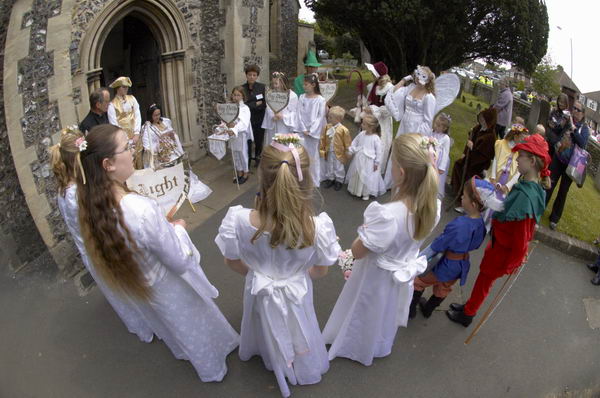
The children process, [in their realms in alphabetical order] from the Common to Hayes village, where there is a short ceremony, ‘Little Sanctum’ outside the village church.
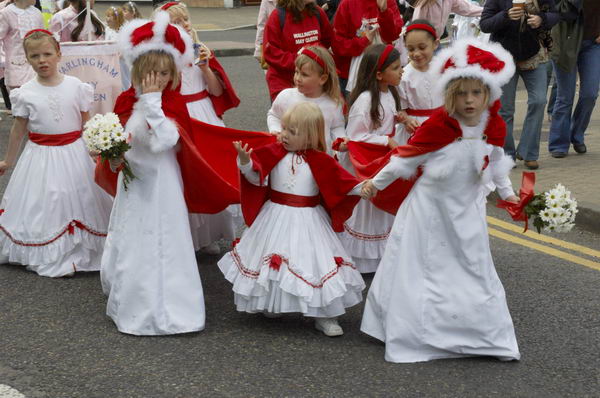
The procession then continues around Hayes, returning to the Common. This is rather a long walk for some of the younger children.

Back at the Common there is a short ceremony using Mr Deedy’s words read by the Fairy Queen, Bo-Peep, Robin Hood and others, before the London May Queen is crowned by the Prince Of Merrie England. The realm queens are then presented to the London May Queen, and have their pictures taken as a group in front of the maypole [as in that Ray-Jones picture.]
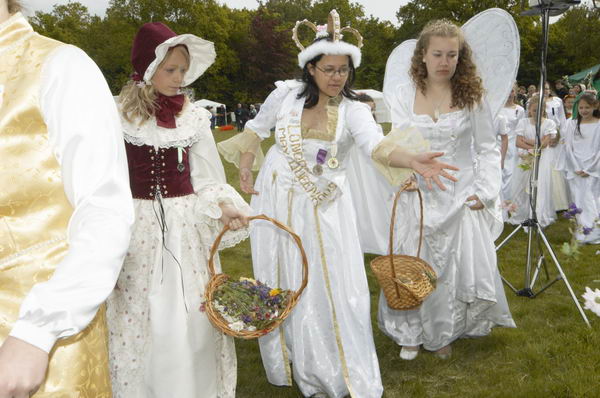
The London May Queen then goes around the field with her main attendants as Flora, with baskets of flowers which she throws to the realm children.This is followed (after the rather lengthy raffle draw) by dancing round the maypole in a fairly energetic and undisciplined fashion.
Flickr – Facebook – My London Diary – Hull Photos – Lea Valley – Paris
London’s Industrial Heritage – London Photos
All photographs on this page are copyright © Peter Marshall.
Contact me to buy prints or licence to reproduce.
